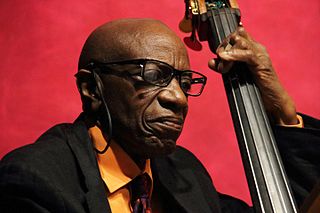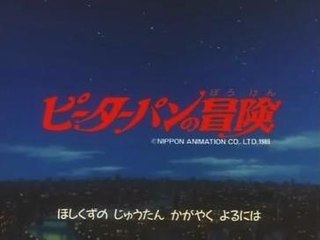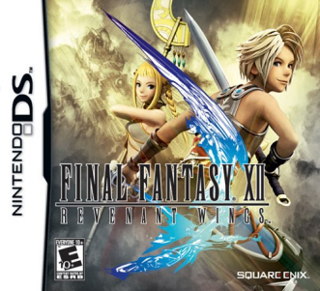
Bronski Beat were a British synth-pop band formed in 1983 in London, England. The initial lineup, which recorded the majority of their hits, consisted of Jimmy Somerville (vocals), Steve Bronski and Larry Steinbachek. Simon Davolls contributed backing vocals to many songs.

William Edward Crystal is an American actor, comedian, and filmmaker. He is known as a standup comedian and for his film and stage roles. Crystal has received numerous accolades, including six Primetime Emmy Awards and a Tony Award as well as nominations for three Grammy Awards and three Golden Globe Awards. He was honored with a star on the Hollywood Walk of Fame in 1991, the Mark Twain Prize for American Humor in 2007, the Critics' Choice Lifetime Achievement Award in 2022, and the Kennedy Center Honors in 2023.
Fraggle Rock is a children's musical fantasy comedy puppet television series about interconnected societies of Muppet creatures, created by Jim Henson.

Cecil McBee is an American jazz bassist. He has recorded as a leader only a handful of times since the 1970s, but has contributed as a sideman to a number of classic jazz albums.

Life of Galileo, also known as Galileo, is a play by the 20th century German dramatist Bertolt Brecht and collaborator Margarete Steffin with incidental music by Hanns Eisler. The play was written in 1938 and received its first theatrical production at the Zurich Schauspielhaus, opening on the 9th of September 1943. This production was directed by Leonard Steckel, with set-design by Teo Otto. The cast included Steckel himself, Karl Paryla and Wolfgang Langhoff.
Shuki Levy is an Israeli-American music composer and television producer. Levy's best known work is soundtrack compositions for children's television programs of the 1980s, such as The Real Ghostbusters, Inspector Gadget, The Mysterious Cities of Gold, M.A.S.K., Dinosaucers, He-Man and the Masters of the Universe, She-Ra: Princess of Power, and Jayce and the Wheeled Warriors. In the 1990s, he became known chiefly for his work on the Power Rangers franchise, Digimon: Digital Monsters, Masked Rider, VR Troopers, and Big Bad Beetleborgs. He has also written and directed numerous episodes for some these television shows, and directed a few films, such as Perfect Victims (1988) and Blind Vision (1991). He was also part of a musical duo known as Shuky & Aviva with his partner Aviva Paz.

Rainbow is a British children's television series, created by Pamela Lonsdale, which ran from 16 October 1972 until 6 March 1992, made by Thames Television. The series was revived by Tetra Films from 10 January 1994 until 24 March 1997, in two different formats from the original Thames Television series, with differing cast members. The series was originally conceived as a British equivalent of Sesame Street.

GTR were a British supergroup rock band founded in 1985 by former Yes and Asia guitarist Steve Howe and former Genesis guitarist Steve Hackett. Though the band's leaders were known as progressive rock musicians, GTR appealed to AOR radio stations. The band lasted for two years and one album. Hackett subsequently criticized the project, though not necessarily the other musicians involved in it.

Reginald Workman is an American avant-garde jazz and hard bop double bassist, recognized for his work with both John Coltrane and Art Blakey, in addition to Alice Coltrane, Mal Waldron, Max Roach, Archie Shepp, Trio Three, Trio Transition, the Reggie Workman Ensemble, and collaborative projects with dance, poetry and drama.

Anthony Lawrence Carey is an American musician, composer, producer, and singer/songwriter. In his early career he was a keyboardist for Rainbow. After his departure in 1977, he began a solo career, releasing albums under his own name as well under the pseudonym Planet P Project, and producing for and performing with other artists.

Rainbow Brite and the Star Stealer is a 1985 American animated fantasy film directed by Bernard Deyriès and Kimio Yabuki. The film was produced by DIC Enterprises, Inc. and Hallmark Cards, and was released in the United States on November 15, 1985 by Warner Bros. It is the only film to feature the greeting card character Rainbow Brite; she also appeared in a few television specials prior to its release, and later in a Kideo TV series. In the film, Rainbow Brite tries to bring spring to an Earth that is already facing a perpetual winter. She must stop a wicked princess who wants all of Spectra, a planet-sized diamond through which all the light in the universe must pass.

John Matthews and Caitlín Matthews are English writers. Together, they have written over 150 books and translated into more than thirty languages. Their work also includes Tarot decks, a card-based storytelling system, screenplays, and songs.
"The Testament of Arkadia" is the twenty-third episode of the first series of Space: 1999. The screenplay was written by Johnny Byrne; the director was David Tomblin. The final shooting script is dated 5 February 1975, with a revised final shooting script dated 25 February 1975. Live-action filming took place Tuesday 11 February 1975 through Tuesday 25 February 1975.

Peter Pan: The Animated Series is an anime series by Nippon Animation, directed by Yoshio Kuroda, which first aired in Japan on Fuji Television between January 15 and December 24, 1989, and is also popular in the United Kingdom.

Max Headroom is a fictional character played by actor Matt Frewer. Advertised as "the first computer-generated TV presenter", Max was known for his biting commentary on a variety of topical issues, arrogant wit, stuttering, and pitch-shifting voice. The character was created by George Stone, Annabel Jankel, and Rocky Morton. Max was advertised as "computer-generated", and some believed this, but he was actually actor Frewer wearing prosthetic makeup, contact lenses, and a plastic moulded suit, and sitting in front of a blue screen. Harsh lighting and other editing and recording effects heighten the illusion of a CGI character. According to his creators, Max's personality was meant to be a satirical exaggeration of the worst tendencies of television hosts in the 1980s who wanted to appeal to youth culture, yet were not a part of it. Frewer proposed that Max reflected an innocence, largely influenced not by mentors and life experience but by information absorbed from television.

Final Fantasy XII: Revenant Wings is a real-time tactical role-playing game developed by Think & Feel and Square Enix and published by Square Enix for the Nintendo DS. It is a stand-alone sequel to the 2006 PlayStation 2 role-playing video game Final Fantasy XII.

Zheng Yi Sao, also known as Shi Xianggu, Shek Yeung and Ching Shih, was a Chinese pirate leader active in the South China Sea from 1801 to 1810.

Jake and the Never Land Pirates, titled Captain Jake and the Never Land Pirates for the fourth season and associated merchandise, is an American animated interactive preschool children's television series for Disney Junior. Based on Walt Disney's Peter Pan franchise, which was itself based on the 1904 play and 1911 book by J. M. Barrie, it was the first Disney Junior original show following the switch from Playhouse Disney. It stars Sean Ryan Fox, Megan Richie, Jadon Sand, David Arquette, Corey Burton, Jeff Bennett, Loren Hoskins, and Dee Bradley Baker. The series was created by Disney veteran Bobs Gannaway, whose works include Mickey Mouse Clubhouse and Secret of the Wings.

Filly Funtasia is an animated fantasy television series created by Jacob and Henrik Andersen for Dracco. The series follows filly Rose and her friends as they attend a magical academy in the royal kingdom of Funtasia. It is based on the Filly toy franchise. The series was originally produced by Dracco Brands, BRB Internacional, Screen 21, and Black Dragon Entertainment, but the latter three companies dropped out of producing the series around 2016, and the former dropped out in 2019. Guangzhou Huamai Animation Studios, B-Water Animation Studios, and Zhaolong Culture joined production much later and managed to complete what the other studios left behind.
















